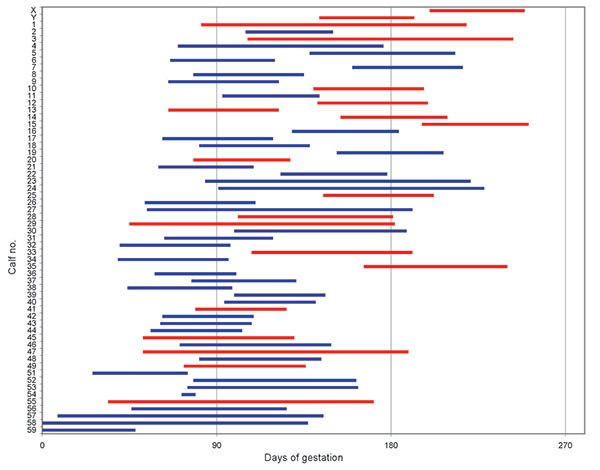Volume 15, Number 12—December 2009
Dispatch
Transplacental Transmission of Bluetongue Virus 8 in Cattle, UK
Figure

Figure. Estimated gestation period at infection of the dam in relation to occurrence of transplacental transmission. Bluetongue virus (BTV) test data for the dams and birth dates of the calves were used to calculate the window of gestation when the dam could have become infected (Technical Appendix, for details). The calculated infection windows are shown in red for BTV-positive calves (transplacental infection did occur) and in blue for BTV-negative calves (transplacental infection did not occur). Because calves were conceived naturally, the exact date of conception is not known, although all were considered to have been born at full term.
Page created: December 09, 2010
Page updated: December 09, 2010
Page reviewed: December 09, 2010
The conclusions, findings, and opinions expressed by authors contributing to this journal do not necessarily reflect the official position of the U.S. Department of Health and Human Services, the Public Health Service, the Centers for Disease Control and Prevention, or the authors' affiliated institutions. Use of trade names is for identification only and does not imply endorsement by any of the groups named above.